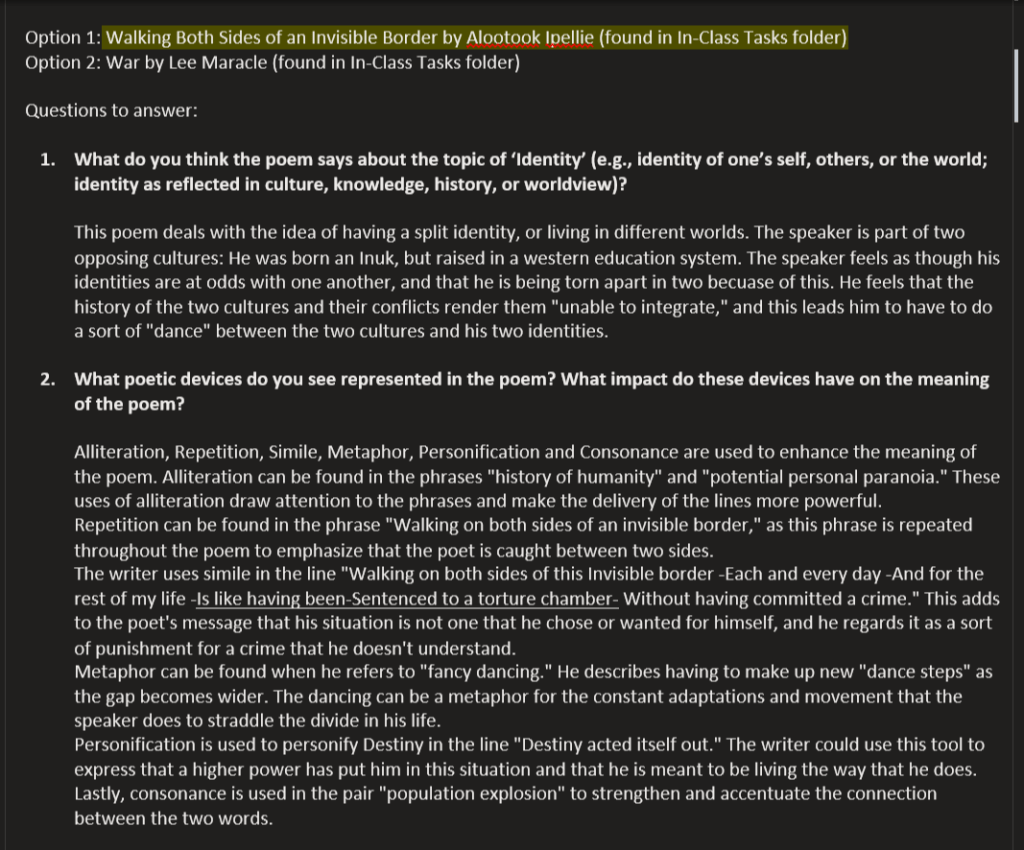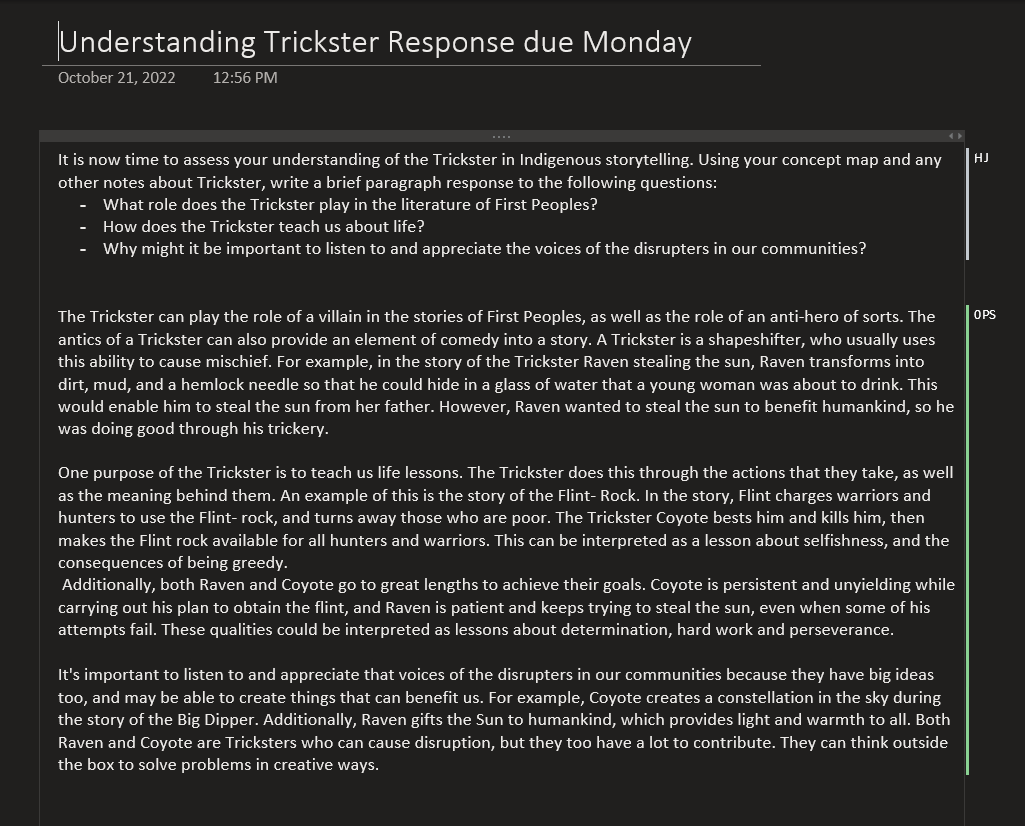Core Competency Reflection
Working collaboratively with others
This semester, I enjoyed and greatly benefited from group work. After each lesson, our class would split into groups to do “group work” questions together. I found that this practice enhanced my understanding of the topics covered in the lesson, as I was able to fill in the gaps in my comprehension of the lesson by asking my classmates who understood the lesson quite well. My group members explained concepts that I didn’t understand in a way that was helpful, kind, and constructive. I also explained concepts that I had grasped to classmates that needed help. Overall, group work was helpful to myself and my group in improving our understanding of the topics covered in class.
Strategically preparing for assessments
This semester, I used studying practices that helped me to successfully prepare for assessments that I completed in this class. These practices included reading over the lesson notes published on OneNote, completing all assigned workbook questions, going to Flex or CENT time when I required help with a concept, and highlighting any mathematical vocabulary that I might need to know for the test. I also created a study plan a few days before the assessment day so that I wouldn’t be left cramming the night before the test. These studying practices helped me to retain the information taught in the course so that I could perform to the best of my ability on the day of the assessment.
Managing time effectively
This semester, I managed my time effectively both in class and outside of class. In class, I was attentive during the lessons and group work. My goal for each class was to complete all or most of my workbook questions in class so that I could fully understand the concept. Most days, I was able to meet this goal. Outside of class, I booked flex and Cent blocks in Pre-Calculus so that I could receive help with workbook questions that I was struggling with or have extra time to work on a unit that I was moving slower than normal through. After school, I set aside time for studying, and completing workbook questions. Overall, my time management this semester allowed me to complete all assigned work to the best of my ability while leaving time after school for additional study time or other homework.
Advice for Future Students
I have two pieces of advice for future students taking this course. The first piece of advice is to do all assigned workbook questions! They are very good indicators of what might be on the test, and they allow you to practice the concept over and over again until you get it. Also, don’t skip questions. Every single question has a small chance of being on the test.
My second piece of advice is to ask questions. If you don’t understand a concept or even just don’t know why you’re getting a question wrong, it never hurts to ask the teacher or another classmate. Getting help shows that you’re not afraid to advocate for yourself.








